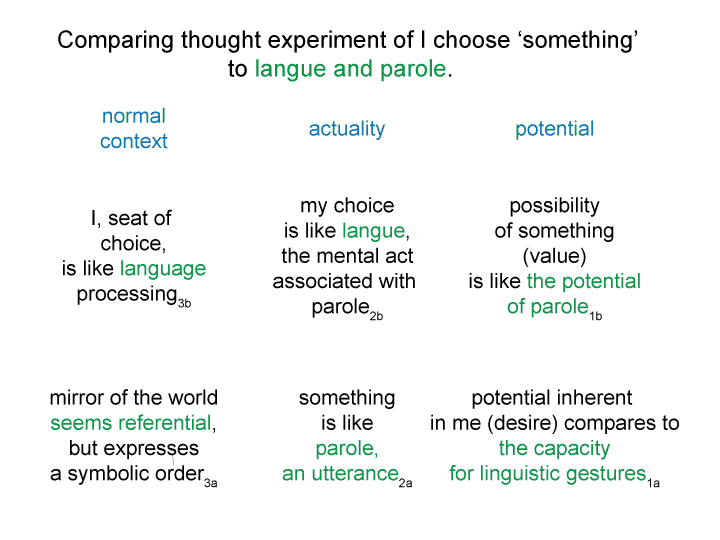Man and Sin by Piet Schoonenberg (1964) 2.3 JL
[What is to be found in the thought experiment3a?
The thought experiment3a is the content-level normal context.
Like the system…3a in parole, the thought experiment3a seems to be referential.
We project referentiality into the thought experiment.
But, it also exists as a symbolic order.
The system…3a sets the normal context for the potentiation of …differences1a.
Parole2a exists as a system of differences3a-1a.]

